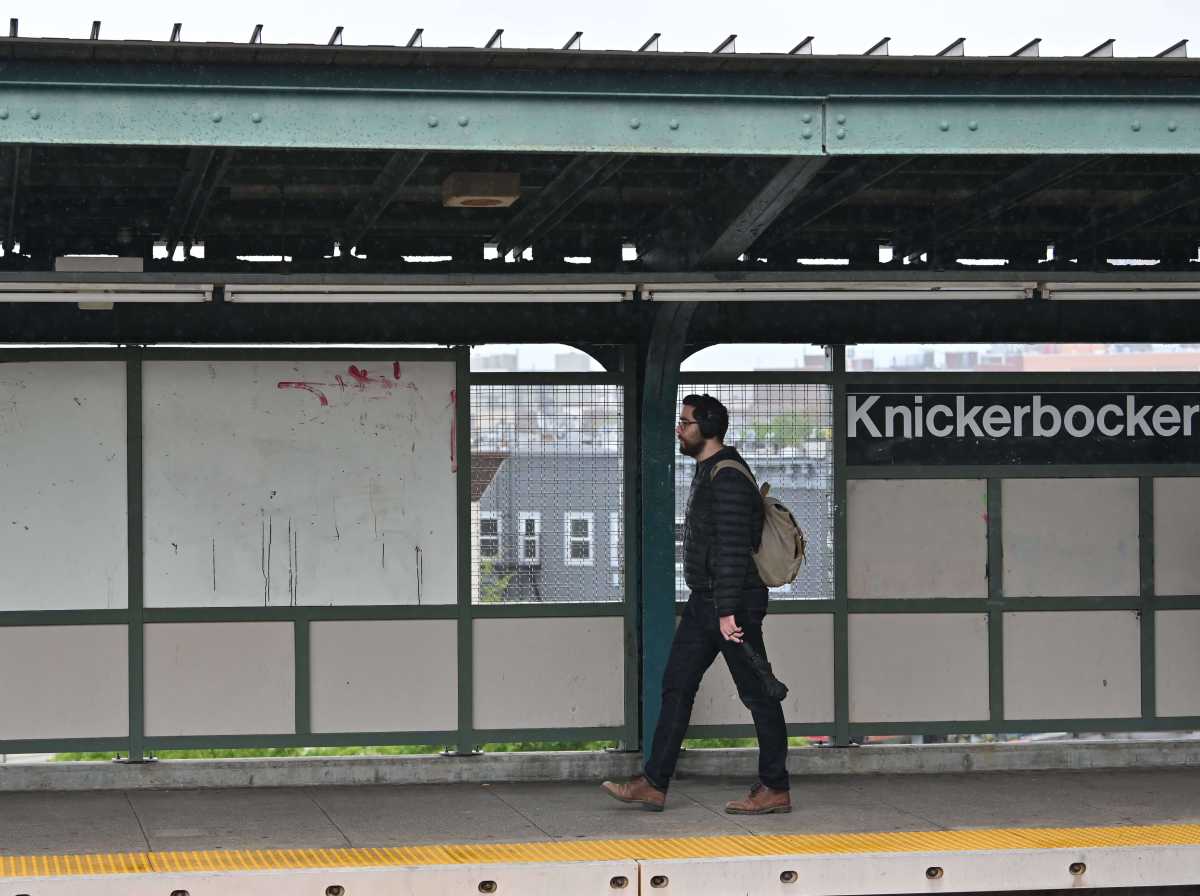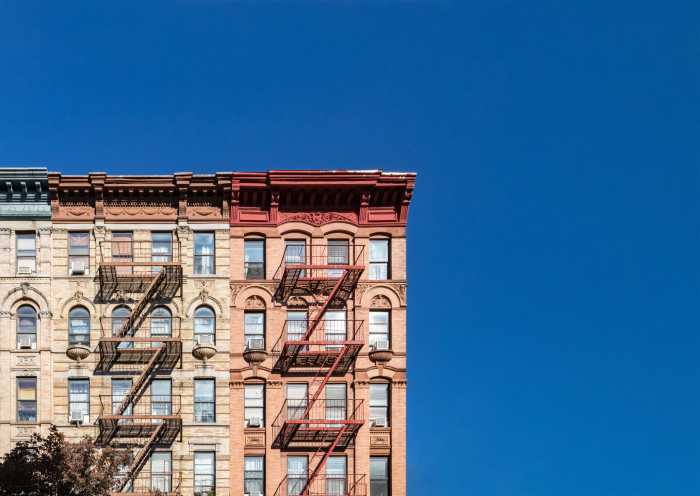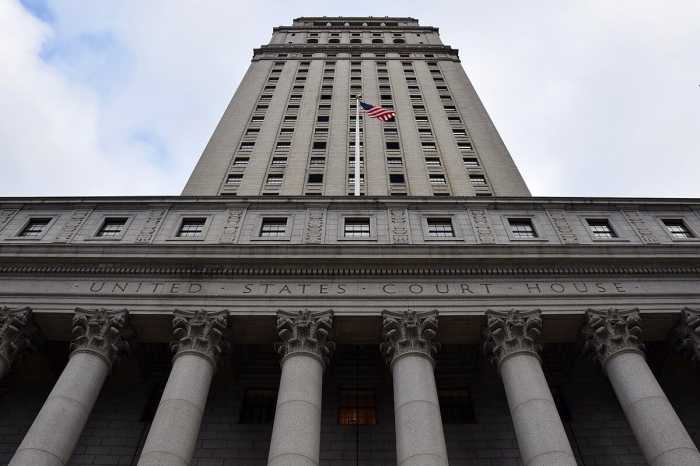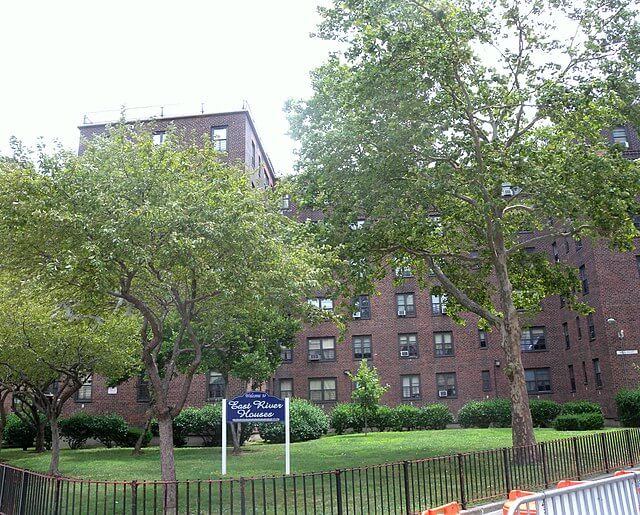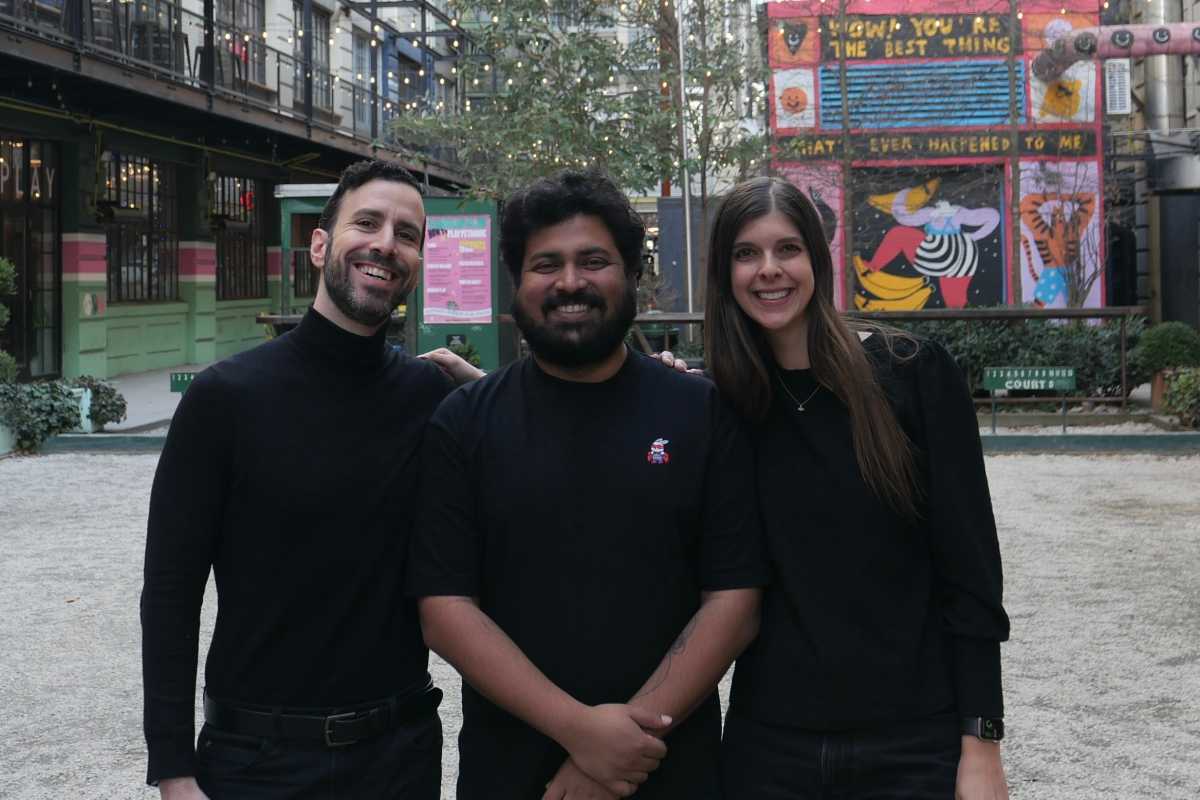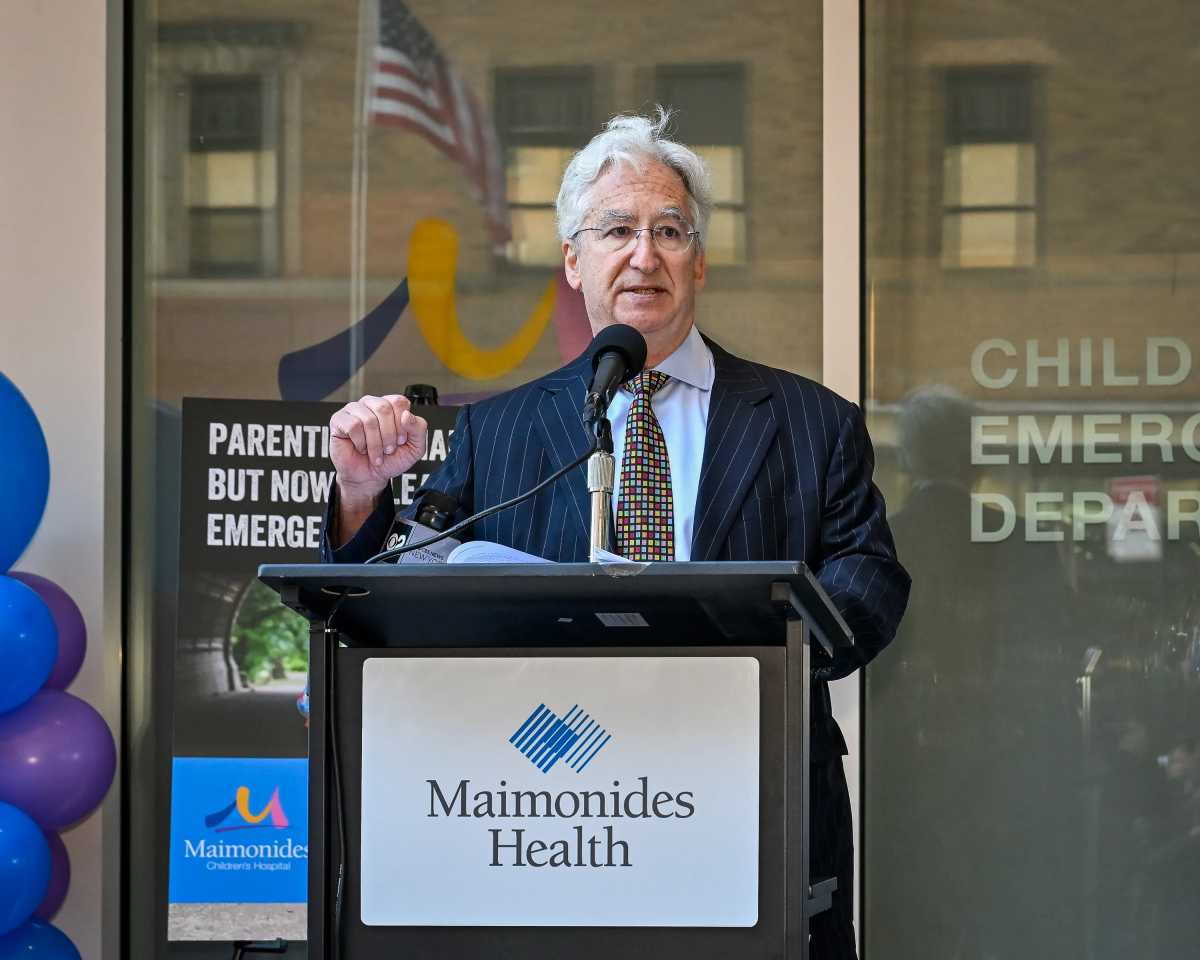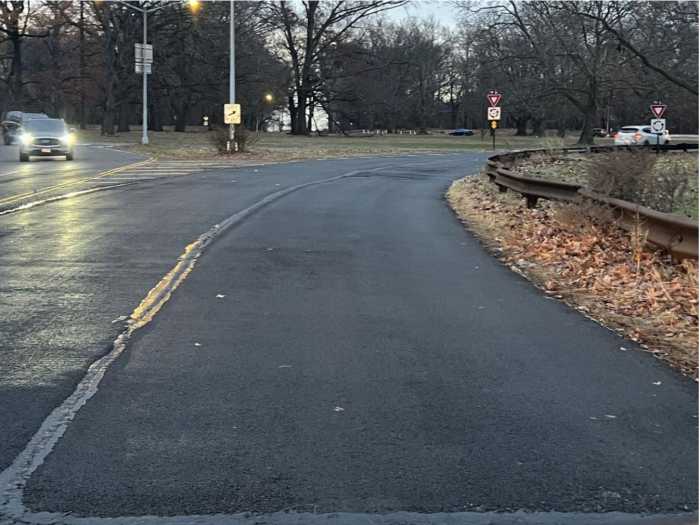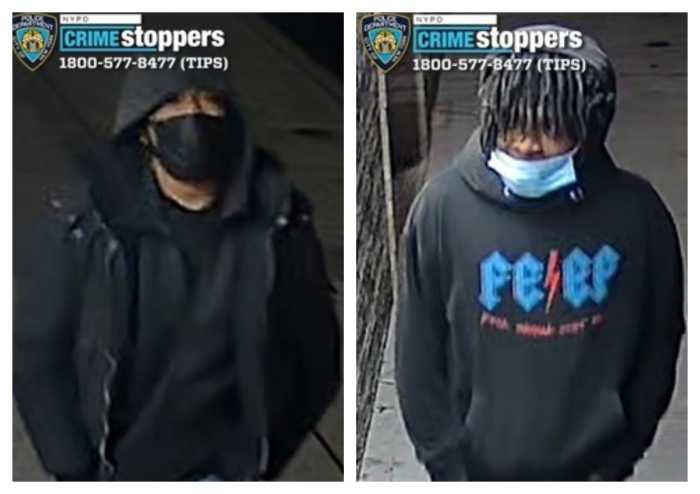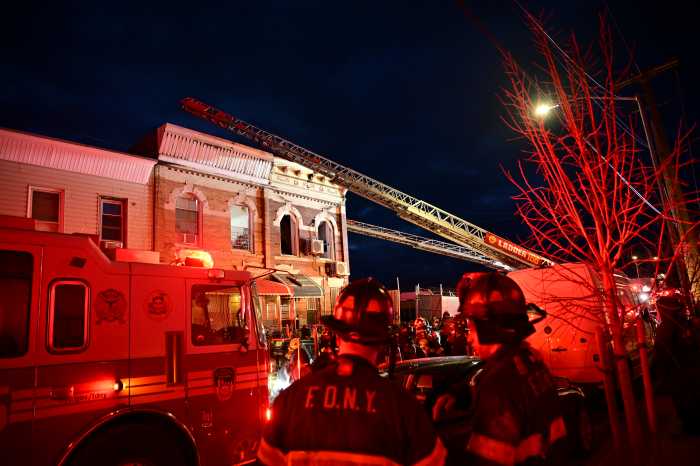Chipped paint with dangerous concentrations of lead has been raining down from the elevated subway tracks that run through Bushwick for years — yet the MTA has dragged its feet in fixing the problem despite public outcry, according to a group of locals, elected officials, and union painters.
Salvatore Polizzi, owner of Tony’s Pizzeria near the Knickerbocker Avenue M train stop, said the issue has been a major concern for years and that he first tested the paint chipping off the J/M/Z tracks in 2020, sending in samples from the areas around Knickerbocker, Myrtle-Wyckoff Avenues, and Myrtle Avenue-Broadway. The chips, he said, came back with a dangerously high concentration of lead, about 63,000 parts per million (ppm), substantially above federal legal limits of 5,000 ppm considered hazardous to human health and requiring abatement.
He shared his findings with local elected officials and the MTA, but said the transit authority has failed to address the issue for three years, even as local children continue to be exposed to dangerous levels of lead.
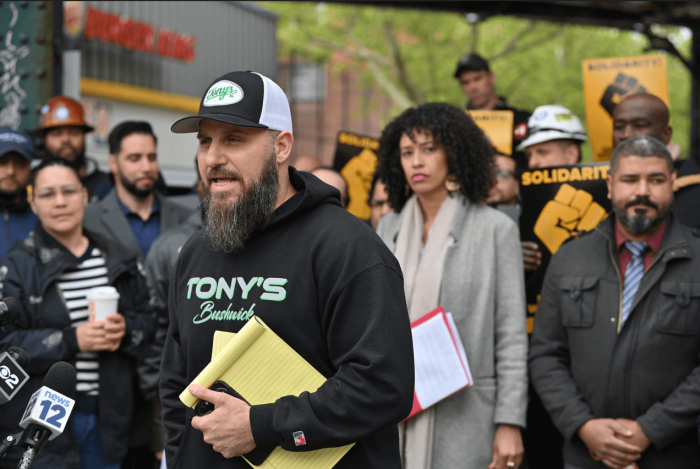
“Unfortunately, not much has come since that day in 2020,” Polizzi said at a press conference at a plaza next to the Knickerbocker Avenue station, a popular hangout spot. “The same material is on these tracks, we are in the same position we were then. The MTA has dragged its feet, it continues to tell us that work will be underway.”
Today, it is widely understood that lead is hazardous to human health, especially for young children, who are at risk of brain damage and stunted development if exposed to large amounts of the toxic material. The sale of lead-based paint for consumer use has been banned since 1978, and today commercial paint cannot contain more 90 ppm of the material.
Those restrictions were not in place when the elevated train lines were first built. The tracks and stations along Myrtle Avenue are some of the oldest in the system, built in the 1880s and operated by private railroad companies nearly two decades before the subway system even existed.
The structure’s paint is chipping throughout the line, but the dangers of lead exposure don’t stop in the immediate vicinity of the tracks. The area’s City Councilmember, Sandy Nurse, noted that when lead paint chips and falls to the ground, it gets ground down as it’s walked and driven over, with dust residue potentially making its way into local homes and businesses.
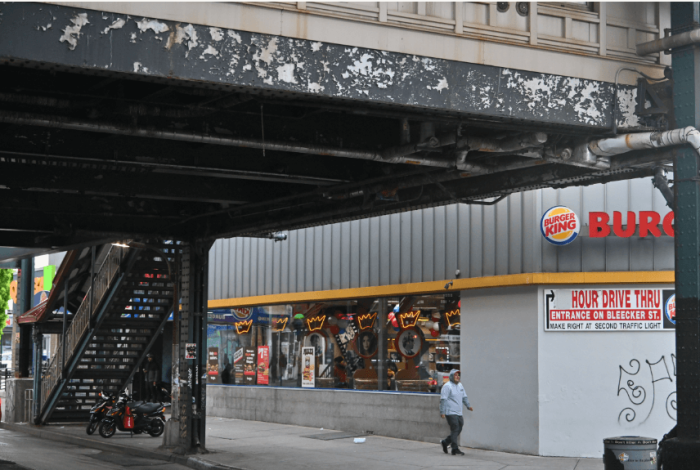
“The paint that is falling off of these tracks falls off as big chunks, and then gets broken down and pulverized into little micro bits, as cars, trucks, and people walk on them,” said Nurse. “So these smaller and smaller bits can turn into…dust [that] gets kicked up by street sweepers, by people walking back and forth, and it can get tracked into our homes.”
“Bushwick deserves to have investments in our public infrastructure,” the councilmember continued. “We deserve to have a safe community where we can walk without being exposed to high levels of toxic material.”
MTA spokesperson Ray Raimundi did not provide an answer when asked when the structure was last repainted. A contract for painting the M line is set to be awarded sometime this year.
“The safety of customers and communities served by the MTA is a top priority. This commitment is reflected in the MTA’s current capital program that includes 26.5 miles of elevated structural repairs and painting, more than six times the amount in the prior plan,” said Raimundi. “The structural maintenance program follows appropriate safety protocols that will not be compromised.”
The 26.5 miles of elevated line represents nearly half of the subway system’s overhead trackage. Approximately $1.3 billion is earmarked for the marathon’s worth of repairs in the agency’s $55 billion 2020-24 capital plan, although it is not necessarily for lead abatement, but rather to protect the aging structures from steel corrosion that could potentially lead to collapse.
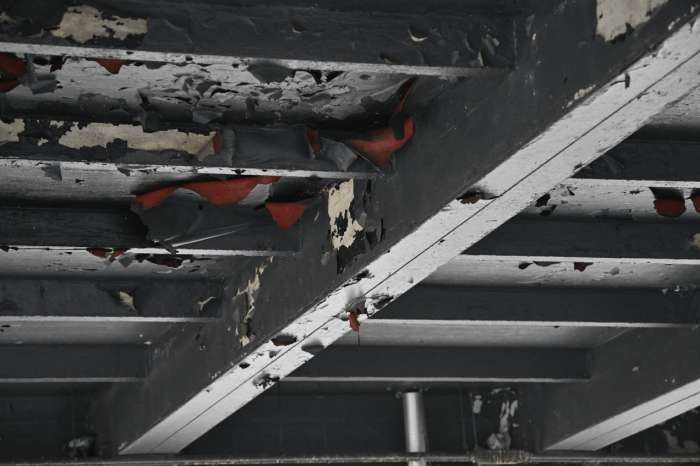
“We have 60 miles of elevated steel structures to look after, and painting is the only way you protect that steel from erosion,” said MTA Chair and CEO Janno Lieber, at the agency’s monthly board meeting last week. “Not painting as we all know will compromise the safety and reliability of the structure, which ultimately leads to emergency repairs, which are expensive, and to service disruptions. We want to avoid all that by being proactive.”
Back in 2017, a group of Jackson Heights residents filed a class action lawsuit against the MTA, arguing the authority had for years allowed lead paint to chip off the 7 train’s elevated structure and fall to the streets of Queens. The following year, then New York City Transit President Andy Byford — known as Train Daddy — announced the agency would remove the hazardous paint, pledging to strip the structure “down to the metal” before applying three new coats of paint between 82nd and 103rd streets.
After the discovery of the lead crisis in Queens, lawmakers demanded that the MTA comprehensively study its elevated structures and issue a report on the presence of lead paint. Bushwick Daily reported last year that when then-Governor Andrew Cuomo signed the bill, it had been substantially weakened, only requiring the MTA to report on its extant capital projects to remediate lead hazards rather than the comprehensive study sought by legislators.



